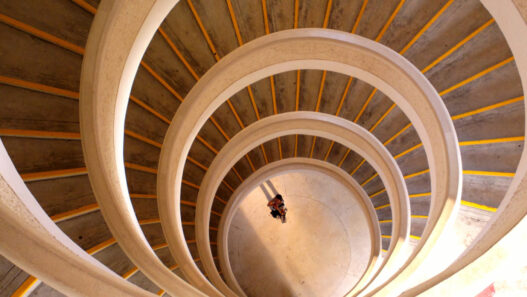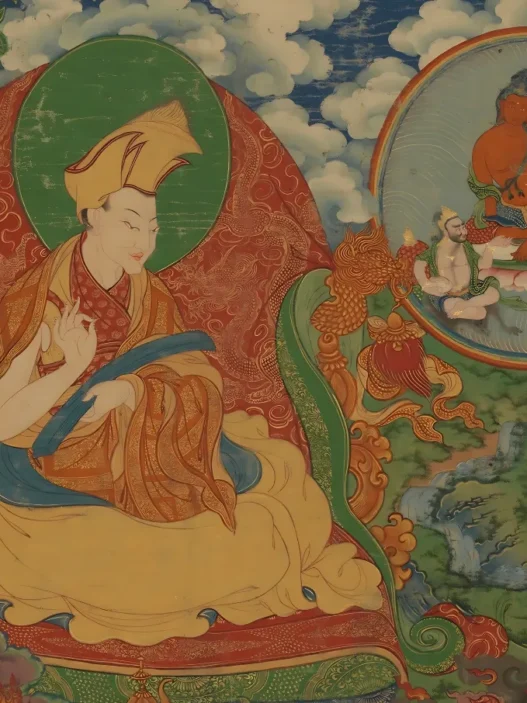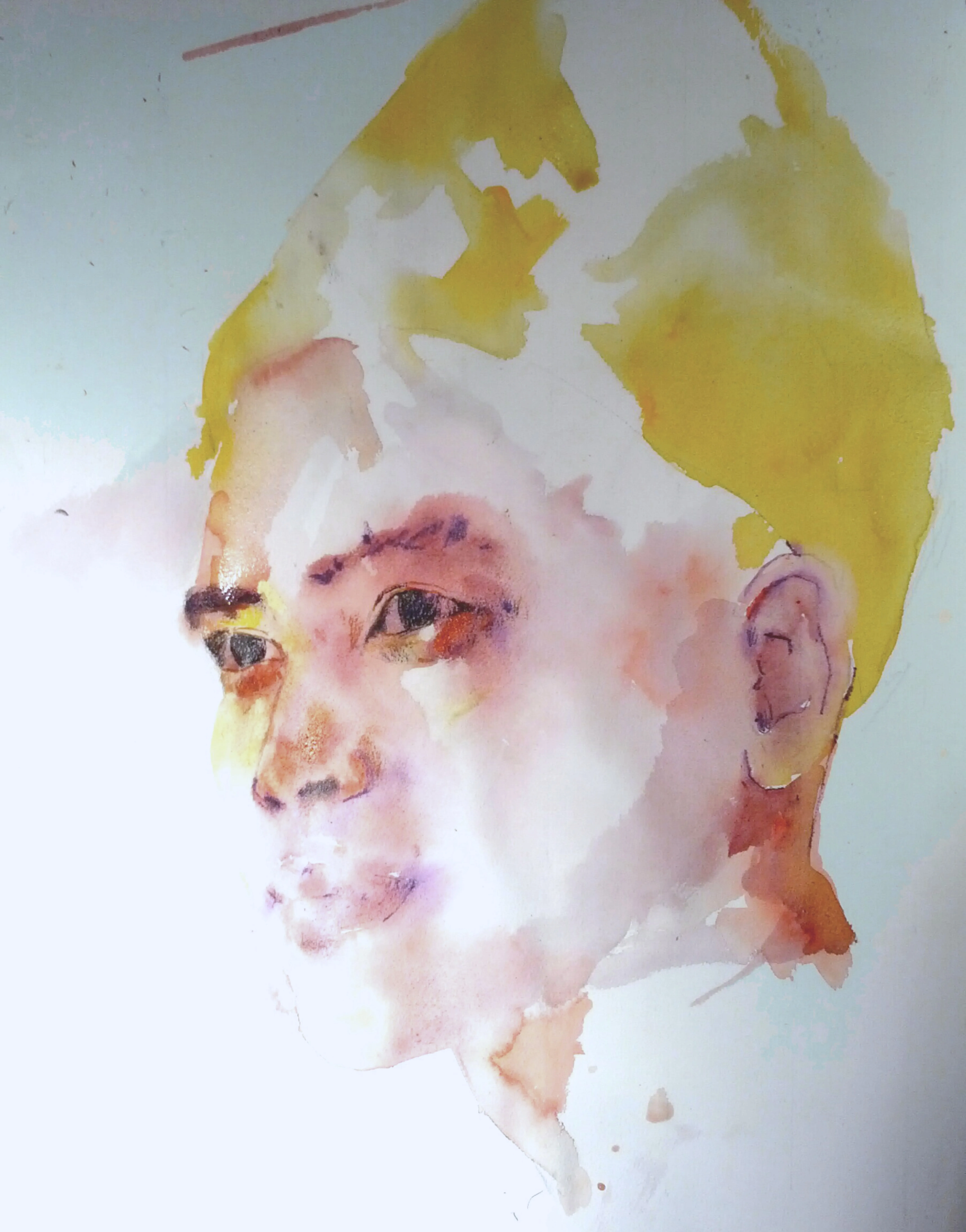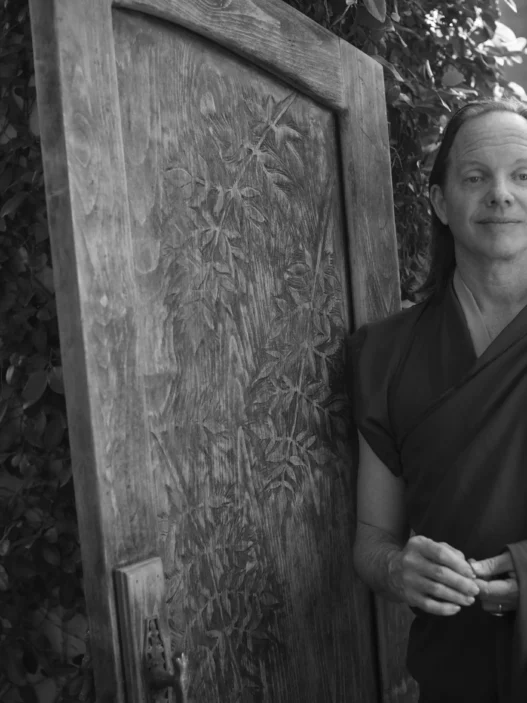Prana & Channels
The original purpose of the yoga asanas, of course, was to reach in from the outside to affect the inner channels, or nadis, through which prana and our thoughts travel, linked together. We thus loosen up chokepoints in the inner channels, where they twine around each other and form the circular-shaped “wheels,” or chakras.
Every asana has an affect upon the flow of prana within the inner body; most often this will address one of the two side channels—the channel of the sun or the channel of the moon—in order to release prana into the central channel. Here is a brief introduction to these three most important channels of the body.
The Channel of the Sun
The first of the three major channels is called the channel of the sun. The word for channel here in Sanskrit is nadi. This means any stream or flow of water or energy, and literally means making a sound. The idea is that of sitting near the side of a stream, and listening to the pleasant tinkling of the water as it flows. The English word note, as in a note of music, may come from the same root.
The word for sun here in Sanskrit is simply ha, which is related to the ancient Indo-European root for sun, sahwel. From this root too come the English words sun, solar, and helium (from the Greek helios, or sun); as well as surya, another Sanskrit word for the sun.
The corresponding Tibetan for channel of the sun is nyimay tsa. Nyima means sun, and tsa means a channel for the flow of prana.
The sun channel has many other names. Perhaps the most well-known in Sanskrit is pingala, which means the reddish channel, and is related to the English word pink. The name derives from the fact that this channel is generally seen as an opaque red in color, due to the passage within it of a high proportion of “red element,” which is related to blood (especially menstrual blood).
The sun channel is also sometimes called the channel on the right (which is ye kyi tsa in Tibetan), since it passes down the side of the spine on our own right side. It is sometimes referred to as the channel of what holds. The phrase what holds here refers to our mind, as the subject which holds an object.
The point of this name is important. Within this right-hand channel flow our “hot” negative thoughts, such as anger, jealousy, and disliking things in an ignorant way. The most serious of these negative thoughts is the tendency to see subjects—meaning people, and our own mind—as things that come from their own side.
When we believe that something we don’t like is coming from its own side, we can easily get angry at it. If we understand that it actually comes from us, because of how we ourselves have behaved in the past, then we stop getting angry.
As long as prana or wind is concentrated in this right-hand channel, we have a tendency to misunderstand ourselves and our mind, and to get angry. Again, the purpose of yoga is to move prana out of this channel, and help us to fix our emotions by using the tool of our physical body.
We should note here that many authoritative ancient sources reverse the explanation of which misperceptions flow through the right and left-hand channels. That is, some texts say that misunderstanding objects, as opposed to subjects, flows through the right-hand channel. This is obviously an important subject for further research.
The Channel of the Moon
The second of the three major inner channels or nadis is the channel of the moon. The word for moon here in Sanskrit is tha. It refers to a flat disk (such as a full moon).
All heavenly bodies—such as the sun, earth, or moon—were believed by the ancients to be flat disks of this type. Tha is thus related to English words such as tolerate (to bear or withstand) and Atlas (the deity who holds up the world), which contain the old Indo-European root √tel, meaning to bear up or support, as the earth or another planet holds up the things which rest upon it.
The moon in ancient times was considered to give off rays of light which had the effect of cooling whatever they struck. Thus the moon channel is related to our “cooler” negative thoughts—wanting or liking things in a mistaken way. The most serious thought of this type is a misunderstanding of the objects around us, as opposed to the subjects, and thus the channel is also known as the channel of what is held.
The channel itself is seen as being an opaque, milky white color, like the moon, and a common name for it in Sanskrit is ida, which means milky, or milk as an offering or a refreshing beverage. The word is also seen as ila, which is related to the English word liquid. The color of the channel is said to come from the fact that a large proportion of “white element,” related to semen, flows through it.
The moon channel runs down our left hand of the spine, and so is also called the channel on the left. Again, we seek to affect our mental state through our body, by doing asanas which prevent the concentration of prana in this channel.
The Central Channel
You’ve probably noticed by now that if you combine the names of the right and the left-hand channels together, you get ha-tha. This word has the meaning of drastic means to achieve a particular end (in Tibetan, tsentap). The original practices of hatha yoga were very demanding, meant to change the body into light in a hurry.
This change occurs when the prana concentrated in these two side channels—ha and tha—is released and loosened to flow into the central channel (the three connect like pipes in the lower part of the torso). The two channels then actually melt down into the central channel. This combination or union of ha and tha is of course one of the goals of yoga, in the sense of joining.
And this is because the central channel is where our thoughts of wisdom and purity flow: even just understanding the words you’ve read on this page so far has the effect of getting prana moving within the central channel. When all our prana concentrates within the central channel, our body changes to light—we become that angel who can stand on all worlds, at all times, to help every single living being.
The traditional Sanskrit name for the central channel is sushumna. This word comes from the prefix su– repeated twice, and then the root √man. Su means good, and comes from an older root esu. When this root came into our western languages, it lost the s and became eu. This we see in words like euphony (good sound); euthanasia (a “good” death); and eurhythmics (good beat).
The root man means to think, and is found in the English words mind, mental, and man (the “thinking animal”). Su-man thus means thinking well, meaning to think favorably towards someone. As sushumna, with another su before it, it also came to mean to ask someone to think well, or to make a prayer in words or in song. The word hymn, with the same mn, comes from this same source. The central channel is therefore sometimes referred to as the singing channel.
The word sushumna also refers to a specific component of sunlight: think of the light coming from the sun as having many separate parts. The part which lights up the moon, which makes it warm, is called sushumna. And of course our ultimate goal with the central channel is that the sun and moon combine here.
Another common Sanskrit name for the central channel is avadhuti. This can mean the vibrating or shaking channel, or else the channel that throws them off. As the prana in our body begins to flow more freely, we may experience sudden jolts of power passing through the body. And in the end, again, the central channel “throws off” the two side channels that are twisted around it.
Running halfway between the sun and moon channels, the central channel is also sometimes called the Dark Planet, or Rahula in Sanskrit. This is a planet which is thought by tradition to consume the sun and the moon whenever there is an eclipse. Again, the idea is of directing all of our prana into the middle channel, thus destroying the negative influence of the thoughts of misunderstanding running through the two side channels of the sun and moon.
If these two side channels are a more opaque color, the central channel is a blazing red-gold, and translucent, like flame.
Reading
To deepen your study on many of the topics introduced in this post, please refer to the following course on The Knowledge Base:



















